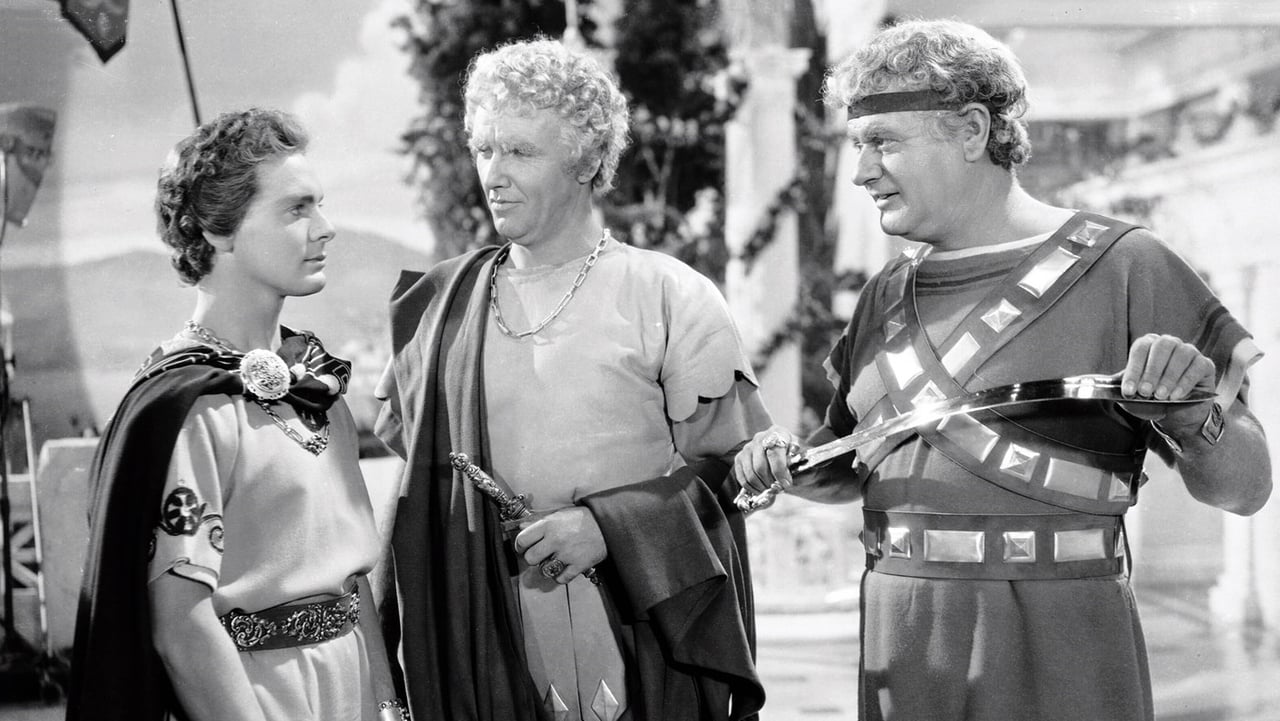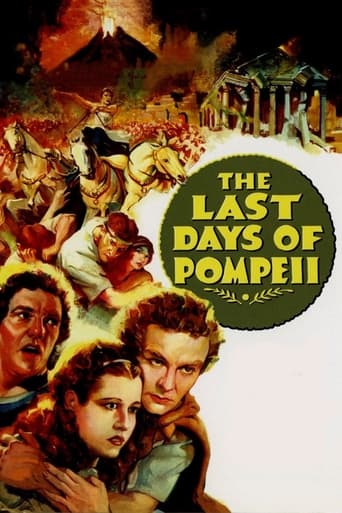

everything you have heard about this movie is true.
... View MoreBest movie ever!
... View MoreThis is one of the few movies I've ever seen where the whole audience broke into spontaneous, loud applause a third of the way in.
... View MoreAll of these films share one commonality, that being a kind of emotional center that humanizes a cast of monsters.
... View MorePOMPEI is a lot of fun - well made, some good acting and the sets and the special effects are pretty impressive for its time. GLADIATOR has a lot of the same plot points. A man starts to fight for money to save his ill wife. When tragedy ensues, he throws himself into arena fighting and becomes a legend. (Of course, there's a smoking volcano behind them at all times - reminding us that all of this will soon be gone.) There's definitely some cheese in the film - some hokey dialogue, silly costumes, but there are times when the film has some real grit. Willis O'Brien who did all the special effects for the classic KING KONG does the effects here. The destruction of the city has some effective moments and a few stunts that are very well done. Basil Rathbone chews up the scenery as Pontius Pilate and yes, there's even a cameo from the big J.C. himself.
... View MoreAlthough never entirely flawless, THE LAST DAYS OF POMPEII ('35) was an ambitious undertaking for RKO to take at that time. The storyline, about a bitter blacksmith who turns gladiator, is really a morality tale wrapped up in biblical settings and given the usual "cast of thousands" publicity by the studio that spent a lot of money in recreating Ancient times.PRESTON FOSTER was never a particularly charismatic actor, often accused of being "wooden", but there's a sincere element about his performance here that allows the film to work. So too does BASIL RATHBONE, giving some extra dimension to his take on Pontius Pilate.Interesting to catch a glimpse of WARD BOND as a gladiator--an actor who has appeared in so many classic films it's almost amazing to realize he was kept as busy as he was.With Max Steiner supplying the score, it's a lesser known gem that makes for enjoyable viewing even if it comes off as a cross between BEN-HUR and THE ROBE and lots of other stories dealing with the effect of the crucifixion on men's lives and their search for the truth.
... View MoreThe Last Days Of Pompeii tells the story of a poor blacksmith in ancient Rome who becomes a gladiator and in turn a wealthy man, while his son, upon encountering Jesus, grows up to become a Christian. The film is a spectacle from the middle thirties, after the De Mille manner, which is to say it tries to look big but is actually, upon closer examination, at best mid-sized. RKO didn't really have the bucks to make a film on as lavish a scale as they surely would have wished. The film has many flaws, but also virtues. It was made by the King Kong team of Ernest Schoedsak and Merian Cooper, who were very resourceful gentlemen, highly creative and not at all like other Hollywood film-makers, and therefore the movie has a unique style that's difficult to put into words. The best way I can describe their approach is to say that it's highly individual; its makers had their own way of doing things, and therefore told their their story, or more properly showed it, so that the movie doesn't resemble other films with similar themes. Also on the plus side is its cast, not of thousands, maybe of hundreds; more likely of dozens. In the leading role Preston Foster's anchors the film in a kind of emotional reality. He may not have been the most versatile of actors but he was a most sincere one, and he is excellent in the lead. Also good is Basil Rathbone as Pontius Pilate, surprisingly unhammy. It's a very good movie overall, hokey as hell but always watchable, and in the end, while the spectacle of Mount Vesuvius erupting isn't all it might be, the movie as whole at least holds firm, and I for one was moved by it, not to tears maybe, but in a more modest way, by the smaller, more intimate tale of a good man who comes to his senses too late, at least for redemption in this world.
... View MoreThis film, Quo Vadis,Sign of the Cross, are as stiff as the statuary on display. Basil Rathbone could of played the noble Roman in all of them because the leads in them, and I forgotten The Robe, once they get their eyes lifted on The King of Kings, the excitement just leaves their characters,the main thrill being which hand they'll raise heavenwards. But at least the heathens were having a fine time in the others for there was sex, hints of sex, or the idea that you should be having sex while watching the movie. But not in The Last Days of Pompeii. Until the climax (hehehe)there's not that much stabbing and slashing either. There are scenes of something was going to happen in the arena, or a village in the ancient Sudan had been raided, or some horses stolen from across the old Roman Palestine border but nothing else. TLDP seemed more like reverential church theatrical production than a motion picture aiming to at least show how a particular era was like while giving everyone in the audience a well done Roman freaktopia (in my case Claudette Colbert was never a hoochie doll again after the asses' milk bath in Sign of the Cross)or something on the line of the television show I,Claudius, a story that was believable told by excellent actors only Basil Rathbone deserved that title in this one.
... View More